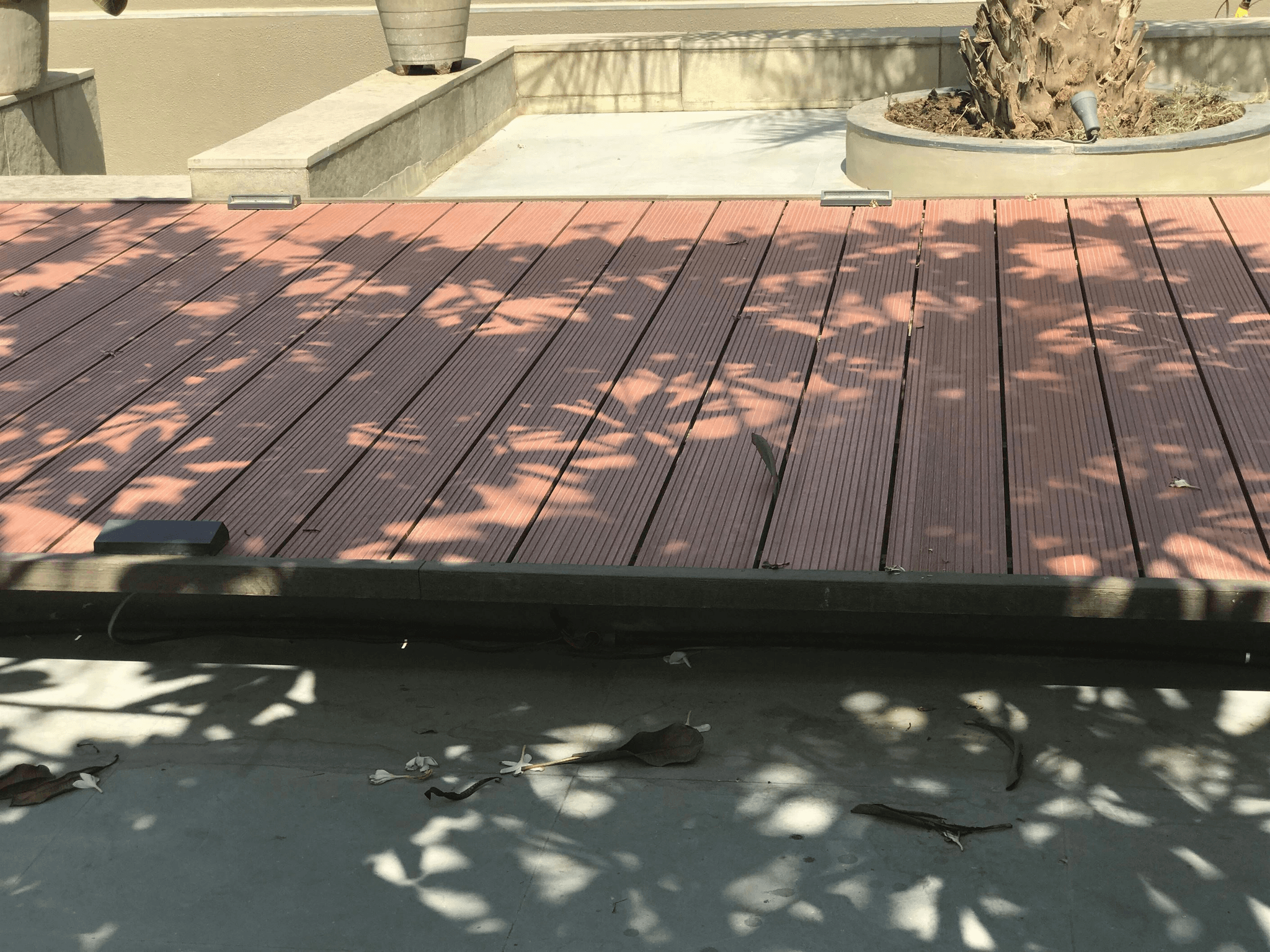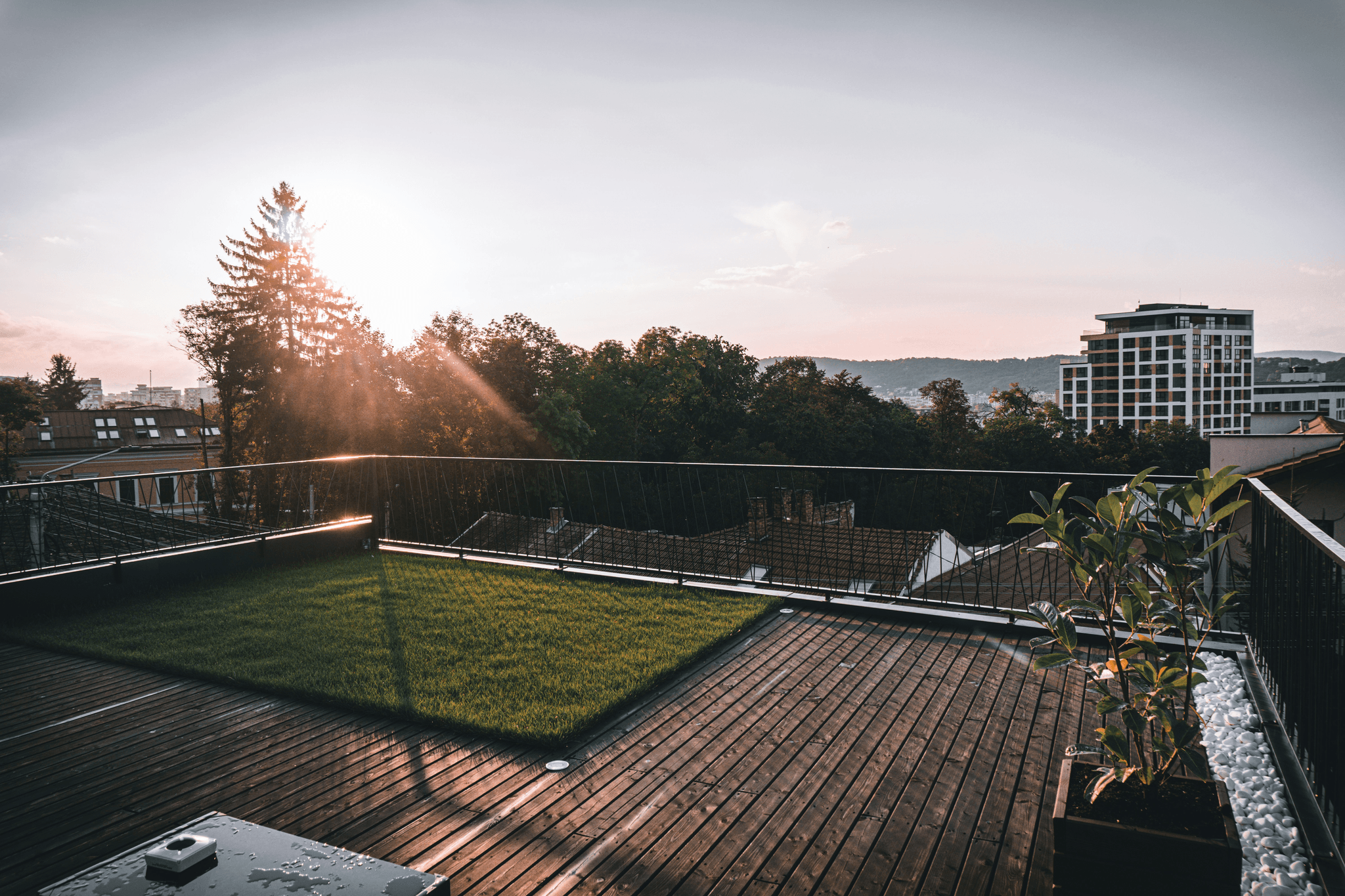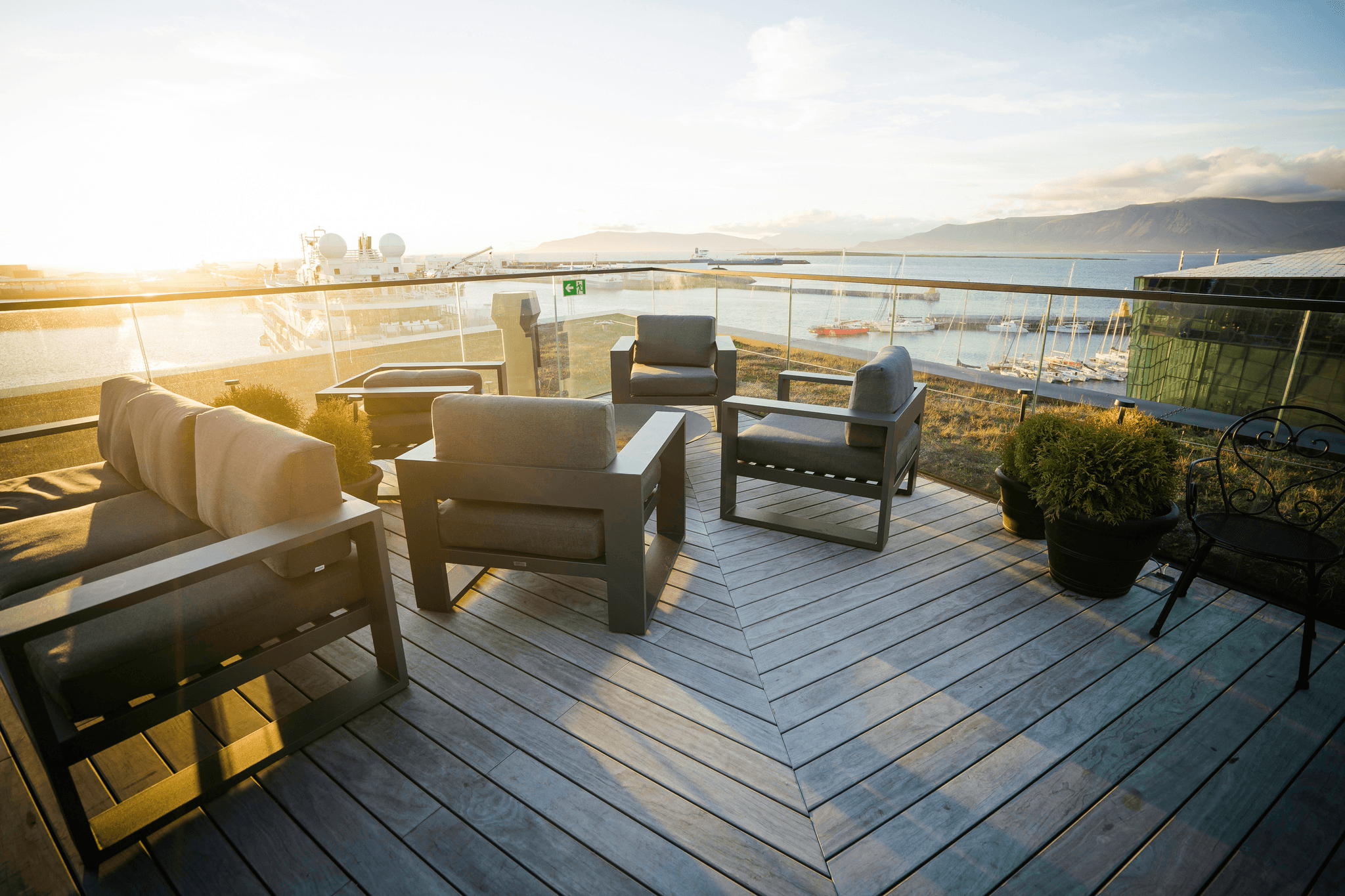Introduction

Understanding Decking Options
Decking materials range from traditional wood to innovative composites, each offering unique benefits and drawbacks. Composite decking has surged in popularity due to its durability and low maintenance requirements, making it an attractive choice for many homeowners. When considering how to lay composite decking on concrete, it's essential to weigh these options carefully and understand what will work best for your specific situation.
Benefits of Composite Decking
Composite decking provides a plethora of advantages over traditional wood, including resistance to rot, splintering, and fading. This means less time spent on upkeep and more time enjoying your outdoor oasis. Additionally, composite materials can be designed to mimic the look of natural wood without the associated downsides—perfect for those seeking style without sacrificing durability.
Why Concrete is Often Used
Concrete is a popular base for various outdoor structures due to its strength and stability; however, it also presents some challenges when paired with composite decking. Many homeowners opt for concrete because it offers a solid foundation that can withstand heavy loads and harsh weather conditions. But as we explore whether you can put composite decking directly on concrete or if other bases are more suitable, you'll discover the nuances of this pairing that can affect longevity and performance.
Can You Put Composite Decking Directly on Concrete?

When considering whether you can put composite decking directly on concrete, it’s essential to weigh the pros and cons. Composite decking provides a durable and low-maintenance option that can enhance the aesthetics of your outdoor space. However, installing it directly over concrete may present challenges that require careful planning and execution.
Examining the Pros and Cons
One of the significant advantages of laying composite decking on concrete is the stability it offers; there's no risk of shifting or settling that you might encounter with traditional wood decking. Additionally, this method can save time during installation since you won't need to build a separate framework for support. On the downside, direct installation may trap moisture underneath, leading to potential mold growth or damage over time—something every homeowner should consider.
Another factor to think about is ventilation; without proper airflow beneath your deck, you could compromise its longevity. It’s also worth noting that if you're contemplating a very low deck over concrete, ensuring adequate drainage becomes crucial to avoid water pooling issues. Ultimately, understanding these pros and cons will help you make an informed decision about whether this approach suits your needs.
Recommended Practices for Installation
If you're eager to learn how to lay composite decking on concrete effectively, start by preparing your surface thoroughly; any debris or unevenness could lead to complications later on. Installing a moisture barrier between the concrete and your composite boards is highly recommended; this will protect against dampness seeping into your materials over time. Additionally, consider using spacers between boards for optimal expansion and contraction allowance as temperatures fluctuate.
For those wondering what is the best base for composite decking when placed on concrete, incorporating a raised frame can significantly improve airflow and drainage while enhancing structural integrity. This approach not only prolongs the life of your deck but also ensures that water doesn’t accumulate beneath it—keeping everything nice and dry! Remember also to follow manufacturer guidelines regarding joist spacing for decking on concrete; it's vital for maintaining stability and strength in your installation.
Addressing Common Misconceptions
Many homeowners often ask: “Can you glue Trex to concrete?” While adhesives might seem like an easy solution for securing boards in place, they generally aren’t recommended due to performance concerns over time—especially in fluctuating weather conditions! Mechanical fasteners are typically preferred because they offer better longevity and structural integrity compared to glue alone.
Another misconception revolves around needing extensive preparation before laying down composite boards; while some groundwork is necessary (like cleaning), it's not as daunting as many believe! Many people also think direct placement eliminates all concerns related to joist spacing for decking on concrete—but that's simply not true; proper spacing remains crucial regardless of how you're installing your deck! By debunking these myths early in your planning phase, you'll set yourself up for success in creating an inviting outdoor space.
How to Lay Composite Decking on Concrete

Installing composite decking over concrete can be a fantastic way to enhance your outdoor space, but it requires careful planning and execution. In this section, we’ll guide you through the process of how to lay composite decking on concrete effectively. Whether you're wondering if you can put composite decking directly on concrete or searching for the best base for composite decking, we’ve got you covered!
Step-by-Step Installation Guide
To start with how to lay composite decking on concrete, ensure that your concrete surface is clean and free of debris. Begin by laying down a moisture barrier, which will help protect your composite boards from any moisture rising up through the concrete. Next, you'll want to set up your joists; typically, 16 inches apart is standard spacing for durability.
Once the joists are in place, secure them firmly using appropriate fasteners designed for both wood and composite materials. Then comes the fun part: laying down your composite boards! Make sure to leave adequate gaps between each board for expansion and drainage—typically around 1/4 inch will do the trick.
Essential Tools and Materials
Before diving into installation, gather all essential tools and materials required for laying down your deck. You'll need a circular saw or miter saw for cutting the boards accurately; a drill with suitable bits will also come in handy for securing everything in place. Don’t forget about measuring tape, a level (to ensure everything is even), and safety gear like goggles and gloves.
In terms of materials, make sure you have high-quality composite boards that suit your aesthetic preferences—there are plenty of colors and textures available! Additionally, grab some joists made from pressure-treated wood or another suitable material that can withstand outdoor conditions.
Tips for a Smooth Finish
For those seeking tips on achieving a smooth finish when laying down composite decking over concrete, attention to detail is key! Start by ensuring that all cuts made during installation are clean; rough edges can detract from an otherwise polished look. When fastening boards together, use hidden fasteners if possible—they provide a seamless appearance without visible screws.
Another important aspect is ventilation; if you're installing very low decks over concrete (less than 6 inches off the ground), consider adding vents or spacers between the deck and concrete surface to allow airflow underneath. Lastly, don’t rush through finishing touches like sealing edges or cleaning up debris—these small details can make all the difference in transforming your project into an outdoor masterpiece!
What is the Best Base for Composite Decking?

Comparing Different Base Options
There are several base options when considering how to lay composite decking on concrete. You can go with a solid concrete slab, a raised frame, or even adjustable pedestals. Each of these choices offers different levels of support, drainage capabilities, and ease of installation, so it's essential to weigh your options carefully before committing.
For those wondering if you can put composite decking directly on concrete, it's possible but not always wise without proper ventilation and drainage considerations. A solid concrete base might seem convenient; however, it could lead to moisture issues if not properly managed. That's where comparing different base options becomes crucial in ensuring longevity and performance.
Advantages of a Raised Frame
Opting for a raised frame provides numerous benefits over other base options when laying composite decking over concrete. One significant advantage is enhanced airflow underneath the deck; this ventilation helps prevent moisture buildup that could lead to mold or mildew growth on your beautiful new deck boards. Additionally, a raised frame allows for easier access to any plumbing or electrical work that may be hidden beneath your deck.
Another plus? A raised frame provides an opportunity for better drainage—essential when considering how to lay composite decking on concrete effectively. With this setup, water can flow freely away from the structure rather than pooling underneath it. This ensures your deck remains in pristine condition while also extending its lifespan significantly.
The Role of Drainage in Base Selection
When selecting the best base for composite decking, understanding the role of drainage cannot be overstated—especially if you're contemplating very low decks over concrete surfaces! Proper drainage prevents water from collecting under your deck boards and causing damage over time; stagnant water is never a friend to any outdoor structure!
A well-designed drainage system will also help maintain structural integrity by reducing soil erosion around footings and supports as well as preventing frost heave during colder months—a critical consideration if you're living in an area with fluctuating temperatures! In summary, always prioritize effective drainage solutions when determining what is the best base for composite decking; it'll save you headaches down the line.
Joist Spacing for Decking on Concrete

Importance of Proper Joist Spacing
Proper joist spacing is essential for ensuring that your composite decking remains stable and secure, especially when installed over concrete. If the spacing is too wide, you risk sagging or warping of the decking boards, which can lead to costly repairs down the line. Moreover, correct spacing helps distribute weight evenly across the deck, which is crucial for maintaining structural integrity—something you really want to prioritize when considering can you put composite decking directly on concrete?
Recommendations from Industry Experts
Industry experts generally recommend a joist spacing of 16 inches on center for most composite decking products, although some may allow up to 24 inches depending on specific board thickness and manufacturer guidelines. This means that if you're wondering what is the best base for composite decking, it's equally important to consider how far apart those joists should be as they will support your entire structure. Always check with your specific brand’s installation guidelines; after all, nobody wants their very low deck over concrete to turn into a very low disaster!
Ensuring Structural Integrity
Ensuring structural integrity while laying composite decking over concrete involves more than just proper joist spacing; it also requires attention to detail in installation practices. Make sure that each joist is level and securely anchored before laying down your boards; this will help avoid any future warping or shifting issues that might arise from improper setup. If you're even contemplating whether you can glue Trex to concrete as an alternative method, remember that mechanical fasteners are generally recommended for stability—especially if you're working with wider spans in your layout.
Very Low Deck Over Concrete
Building a very low deck over concrete can be a fantastic way to enhance your outdoor space while keeping it accessible and stylish. However, this type of installation comes with its own set of challenges and design considerations that you need to keep in mind. From ensuring adequate drainage to selecting the right materials, understanding how to lay composite decking on concrete is essential for long-lasting results.
Design Considerations for Low Decks
When planning a very low deck over concrete, it's crucial to consider the overall height and design aesthetics. You want your deck to blend seamlessly with its surroundings while providing enough elevation to avoid water pooling underneath. Additionally, think about how the joist spacing for decking on concrete will affect the structural integrity; closer spacing may be necessary for added support in lower installations.
Another important factor is accessibility; ensure that your low deck doesn't create tripping hazards or obstruct pathways. It's also wise to choose composite decking colors and textures that complement your home’s exterior. Finally, don’t forget about local building codes—always check if there are specific regulations regarding very low decks over concrete in your area.
Maintaining Proper Ventilation
Ventilation is key when constructing a very low deck over concrete since stagnant air can lead to moisture buildup and potential mold issues. Ensure you leave adequate gaps between the decking boards; this will allow air circulation beneath the surface and help prevent any trapped humidity from damaging your investment.
Consider incorporating ventilation features such as lattice or vents at strategic points around the perimeter of the deck, which can further enhance airflow without compromising aesthetics. Remember that proper ventilation not only prolongs the life of your composite decking but also keeps it looking fresh and new for years to come.
Choosing the Right Finishes
Selecting finishes for your very low deck over concrete can make all the difference in both appearance and longevity. Whether you opt for a natural wood look or vibrant colors, ensure that they are compatible with composite materials specifically designed for outdoor use. The right finish will protect against UV rays while enhancing durability against wear and tear.
It's also worth considering non-slip finishes if your deck might get wet, as safety should always be a priority when choosing how to lay composite decking on concrete effectively. Furthermore, make sure any adhesives or sealants used are suitable for both composite materials and concrete surfaces—this ensures longevity whether you're asking yourself Can you glue Trex to concrete? or using mechanical fasteners.
By thoughtfully addressing these design considerations, ventilation needs, and finish selections, you can create an inviting space that not only looks great but stands up well against time and elements—perfectly suited for enjoying those sunny days ahead!
Can You Glue Trex to Concrete?

Understanding Adhesive Options
There are several adhesive options on the market designed specifically for outdoor applications that can bond composite decking materials like Trex to concrete. Polyurethane-based adhesives are popular due to their strong bonding capabilities and resistance to moisture, making them ideal for outdoor environments where water exposure is common. However, it’s crucial to select an adhesive that is compatible with both the composite material and concrete surface for optimal results.
Another option includes construction adhesives that are formulated for heavy-duty applications; these can provide a solid bond but may require careful application techniques. Before deciding on an adhesive type, consider factors such as temperature variations and potential movement in your deck structure—these can impact adhesion over time. Ultimately, understanding these options will help you make informed decisions about how to lay composite decking on concrete effectively.
When to Use Glue vs. Mechanical Fasteners
Choosing between glue and mechanical fasteners when laying composite decking on concrete depends largely on your specific project needs and preferences. If you're working with a very low deck over concrete where space is limited or aesthetics are a priority, gluing could provide a seamless look without visible screws or nails detracting from your design. However, mechanical fasteners generally offer superior holding power and flexibility in case adjustments or repairs are needed down the line.
In many cases, using both methods together can yield the best results—adhesives can be used in conjunction with screws or hidden fasteners for added stability while maintaining an attractive finish. It's also worth noting that certain building codes may require specific fastening methods depending on local regulations; always check before proceeding! Understanding when glue versus mechanical fasteners should be employed will enhance not only your installation process but also ensure long-lasting performance.
Longevity and Performance of Glue Applications
When properly applied, glued connections between Trex decking and concrete can last many years; however, they do come with some caveats regarding longevity and overall performance. The durability of glued joints largely depends on environmental conditions such as temperature fluctuations, moisture levels, and UV exposure—all factors that can weaken adhesive bonds over time if not accounted for during installation. Thus, ensuring proper surface preparation before applying any adhesive is crucial; clean surfaces free from dust or debris will enhance adhesion significantly.
Moreover, while glued joints may initially seem appealing due to their neat appearance in low-profile decks or areas requiring minimal visual disruption (like very low decks over concrete), they might not offer sufficient structural integrity compared to traditional fastening methods under heavy loads or stress conditions. Therefore, it's essential to assess your specific situation carefully: if you expect significant foot traffic or weight-bearing applications (such as furniture), relying solely on glue might not be advisable.
In conclusion, while gluing Trex directly onto concrete is possible—and sometimes even practical—it’s vital to weigh all pros against cons carefully before committing fully! For those still pondering whether they should take this route after considering what is the best base for composite decking? Remember: sometimes sticking with tried-and-true methods yields better results than innovative shortcuts!
Conclusion

In the world of outdoor living, transforming your space into a beautiful and functional area is an exhilarating journey. With options like composite decking, you can enhance your backyard with style and durability. Whether you're considering how to lay composite decking on concrete or exploring the best base for composite decking, the possibilities are endless.
Transforming Your Outdoor Space
Your outdoor space is a canvas waiting to be painted with creativity and comfort. By incorporating features like a very low deck over concrete, you can create an inviting area for relaxation or entertainment. The right choices in materials not only elevate aesthetics but also contribute to longevity and ease of maintenance.
Making Informed Decking Choices
When deliberating over your decking options, it's crucial to ask questions such as, Can you put composite decking directly on concrete? or What is the joist spacing for decking on concrete? Understanding these factors helps ensure that your investment stands the test of time while meeting safety standards. Armed with knowledge about proper installation techniques and materials, you'll be well-equipped to make informed decisions.
Partnering with Composite Decking Inc
Choosing the right partner in your decking project can make all the difference in achieving outstanding results. Composite Decking Inc offers expert guidance on everything from how to lay composite decking on concrete to whether you should glue Trex to concrete or use mechanical fasteners instead. With their support, you'll navigate through the complexities of installation confidently while enjoying a stunning outdoor transformation.
